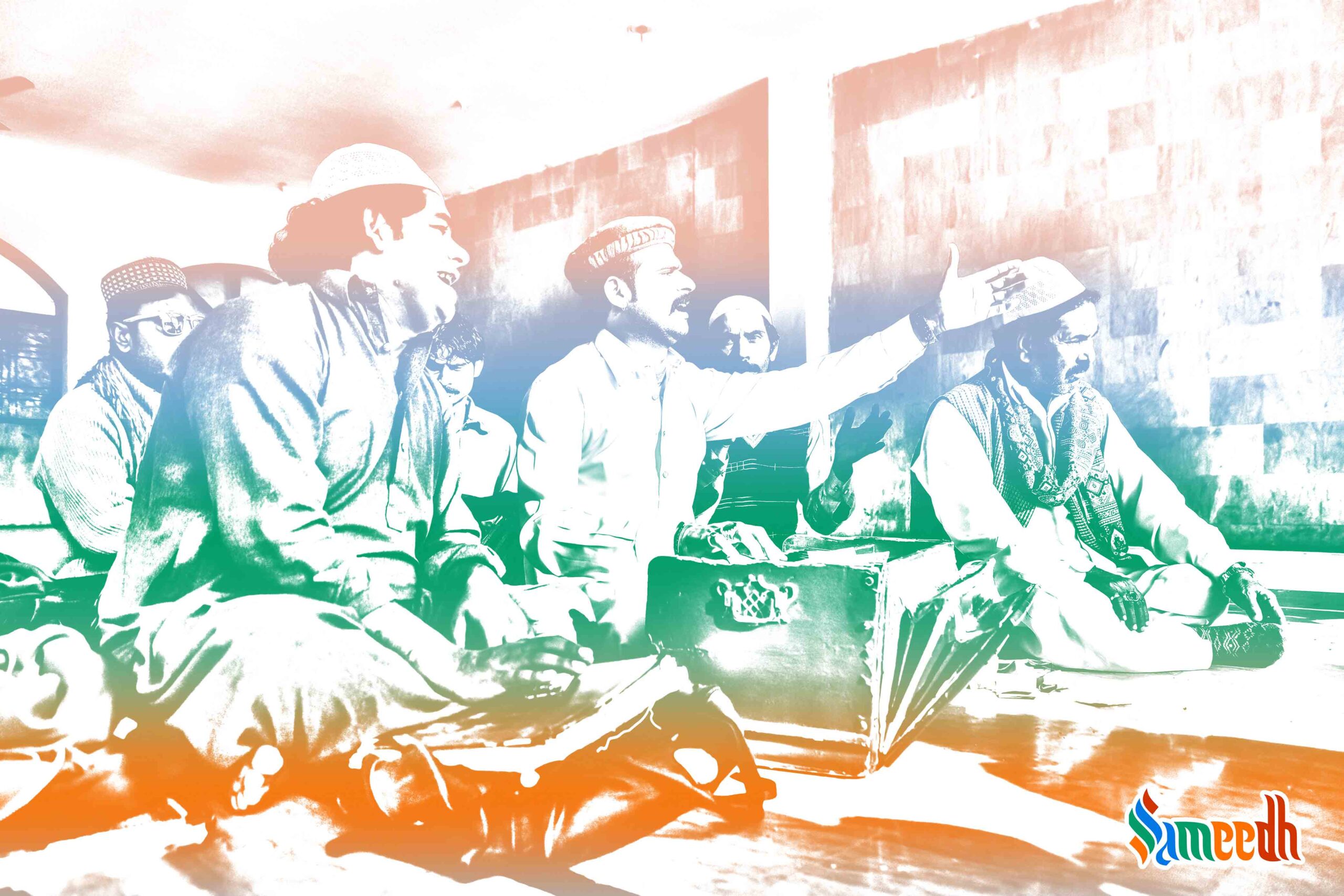This blogpost narrates the story of Qawwali and how it travelled many centuries to remain one of the favorites, today.

DEFINITION
Devotional Melody
The practice of Qawwali started centuries ago to develop a beautiful bond with God by using the medium of music and beautiful words. Since the medieval times, the whole process of composing a Qawwali was aimed at reaching the higher level of spirituality and display devotion to the god.
ETYMOLOGY
To Speak and Seek Spirituality
The word, Qawwali comes from another Arabic word, ‘Qaul’ which means, ‘Speak’ or ‘Utterance’. The singer of the composition of Qawwali is known as a Qawwal. The word, ‘Qawwal’ means the one who chants or sings the Qawwali.
ORIGIN
A Fusion
The origin of Qawwali can be traced to the Medieval Age. In the beautiful 13th century city of Delhi, Amir Khusro, a Sufi saint created a melody by fusing several regional musical components like Indian, Persian, Arabic and Turkish. This was the first creation of Qawwali in the world. The origin and concept of Qawwali is credited to the culture and traditions of Sufism. A majority of these Qawwalis created by Amir Khusro and the poet Rumi were composed in Persian language. Many compositions of Qawwalis can be found in Urdu and Arabic, as well but relatively fewer in number.
REGION/ RELIGION PRACTICING IT
A Blend of Regional Music
The Qawwali is a kind of devotional music which is unique in origin, literature and content. It can be linked to the Sufi culture as well as the classical music of medieval India. It has a several sources and a diverse audience to cater to.
COMPOSITION
A Joyous Process
The whole literature of Qawwali composition is very large in nature and can be understood by studying several different types and components of Qawwali present. One of the most popular components of a Qawwali is known as Ghazal. This forms the lyrical part of a Qawwali. In several parts of the Indian subcontinent, Ghazal is also understood and enjoyed as a specific kind of music and composition. It basically forms the crux and content of a Qawwali.
PERFORMANCE
A Harmonious Set-Up
The arrangement of singers and composition of a Qawwali is unique and beautiful. With multiple singers or Qawwals, a harmonious aura is created with lyrics displaying devotion and the instruments creating a divine music. One session of Qawwali includes an introductory rendition of different instruments like a Table, Harmonium and a Dholak. It if followed by clapping and long renditions of singers which is infused by the notes of different Ragas. Every verse is repeated several times with different and energetic notes and use of claps and musical instruments.
REGIONAL IMPORTANCE
Prevalent since Medieval Era
The composition of Qawwali was started in the Medieval Era but it had a strong influence of different cultural and regional music like Hindustani Classical, which originated much before the first Qawwali was composed.
NATIONAL/ GLOBAL INFLUENCE
International Appeal
The energetic appeal of Qawwali which originated in the Indian subcontinent travelled the globe and gained international recognition and fanbase very quickly.
FAMOUS PEOPLE PRACTICING QAWWALI
Maestros of Qawwali
Amir Qusro led the invention of the Qawwali and was followed by many exceptional maestros since then. Some of the most popular Qawwali singers who led the prominence and love for Qawwali further was Nusrat Fateh Ali Khan and the Wadali Brothers.
Eternal Devotion to Qawwali
With the primary aim of being composed as a Haazri to the Allah, the composition of Qawwali crossed several centuries and is still revered and listened to with the beautiful energy it exudes.
To learn more about different kinds of music that originated in India, keep reading the blogposts on Sameedh.